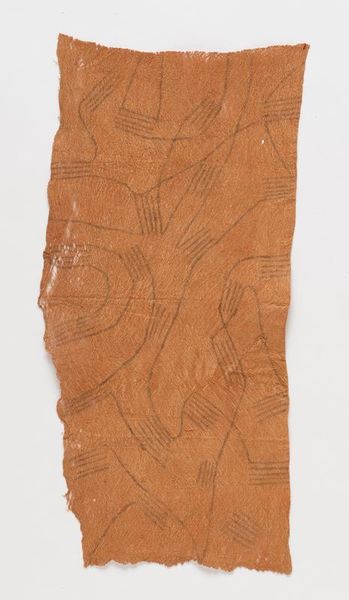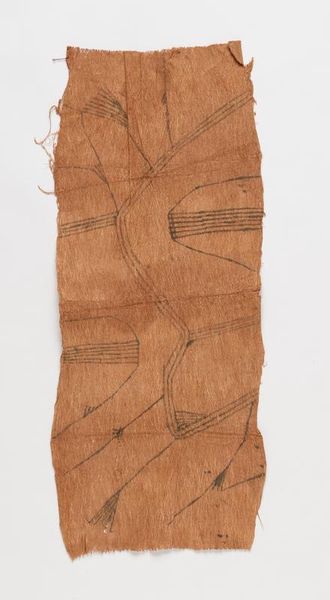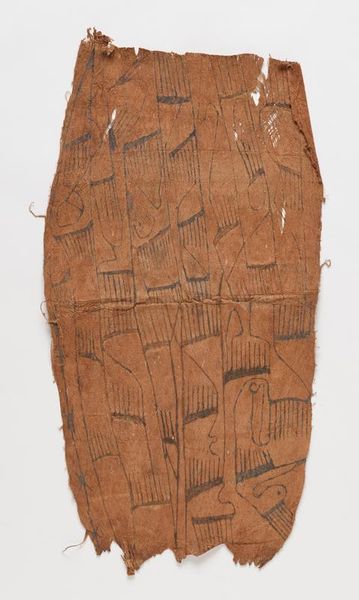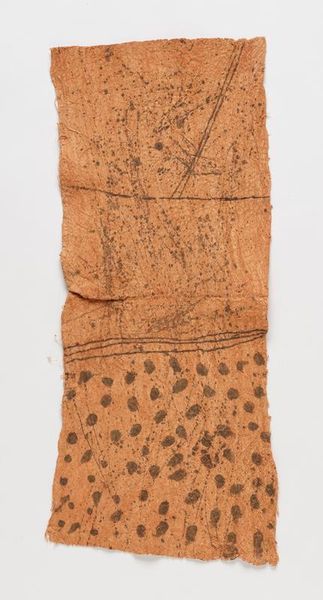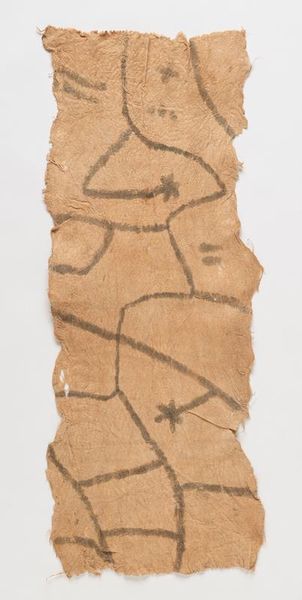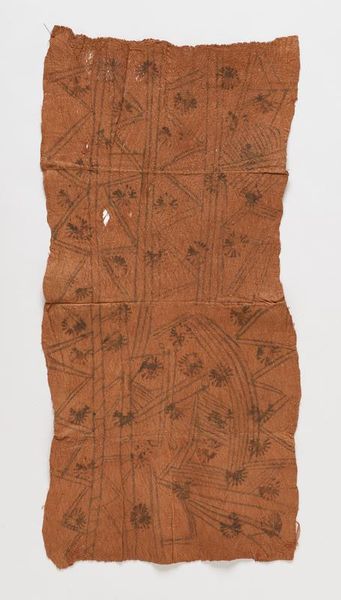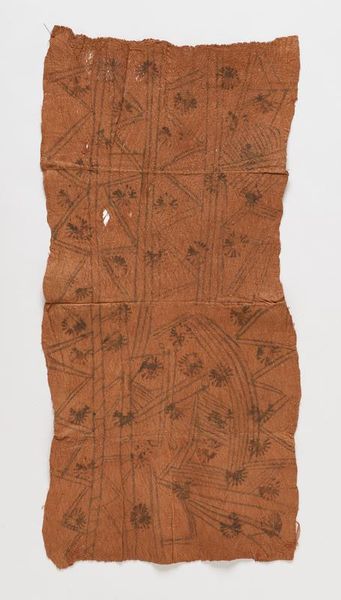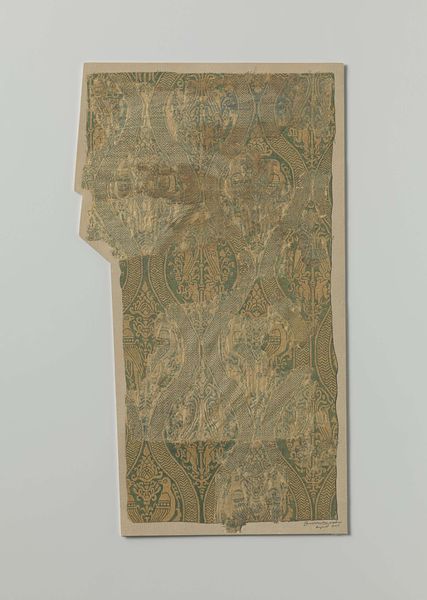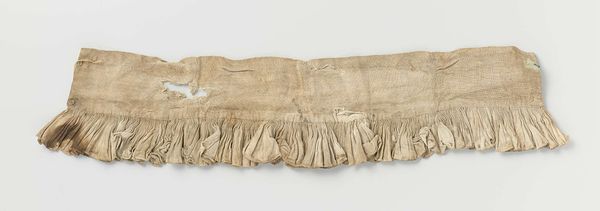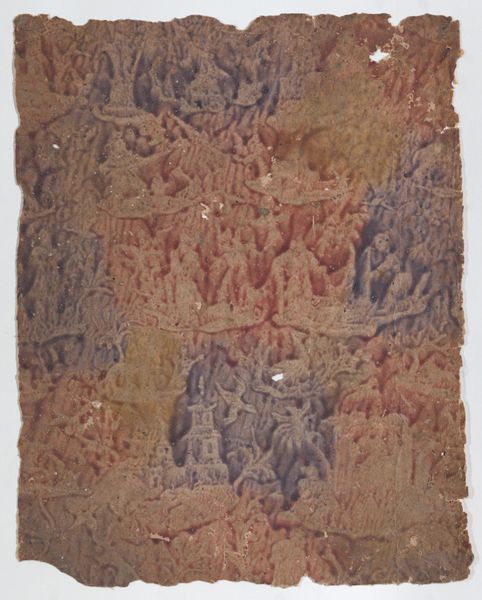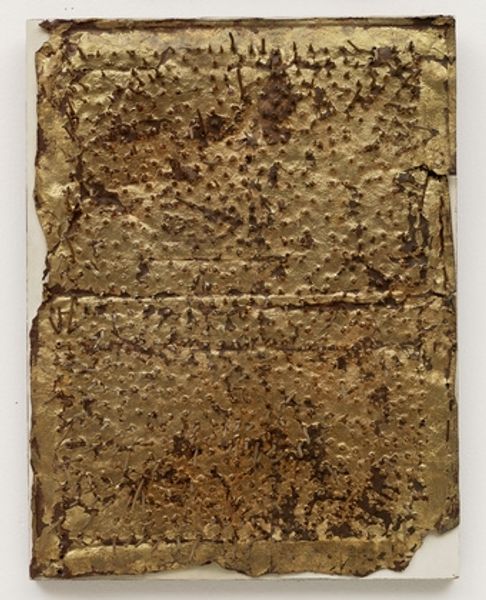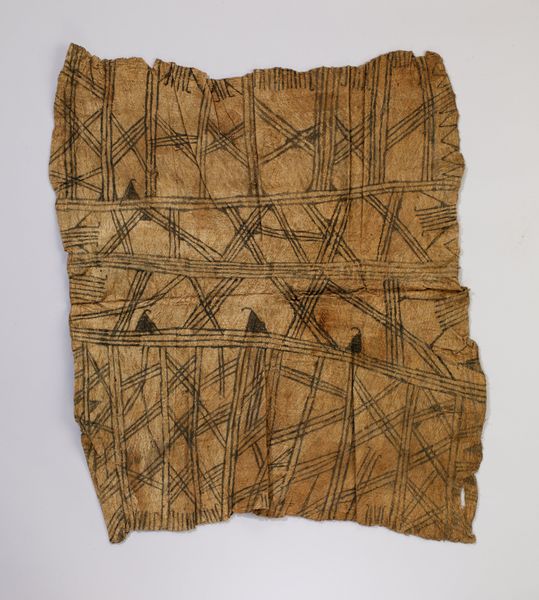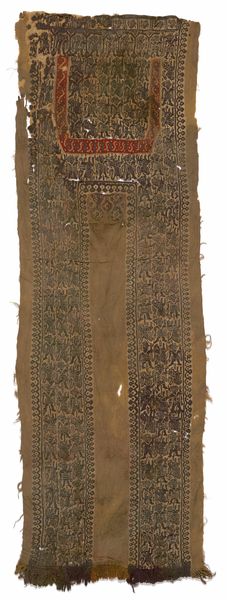
fibre-art, textile
#
fibre-art
#
textile
#
organic pattern
#
natural texture
Dimensions: 36 1/4 × 13 3/4 in. (92.08 × 34.93 cm)
Copyright: No Known Copyright
Curator: There’s something primal and immediate about this panel; it feels almost like uncovering an ancient map, doesn’t it? Editor: Indeed. What strikes me is how the earthy tones and the textured surface combine to evoke such an ancient feeling. This Barkcloth panel was created around 1930 by an artist from the Mbuti people, and we have it here at the Minneapolis Institute of Art. Curator: Barkcloth! I’ve always been fascinated by how something so fundamentally…natural…can become a canvas. The process itself feels like an act of collaboration with nature, doesn’t it? Stripping the bark, pounding it, letting the fibers reveal themselves. And the ochre palette…it hums with the colors of the earth, the very breath of the forest! Editor: It does indeed. What’s intriguing is the abstract composition, these organic lines and patterns, rhythmically applied pigment across the fibrous plane. There’s a certain geometry in how the lines intersect and diverge. Curator: Geometry with a pulse! I can almost hear the rhythm of life in it: the branching of trees, the meandering of rivers… the journeys and cycles that have shaped lives since time began. The irregular edges make the work so honest and real, reminding us it's truly part of nature. You feel the hand of the maker. Editor: Precisely. These mixed media techniques add depth to our understanding and perception of the visual plane. Do you notice the strategic positioning of motifs creating layered depths across the field? Each seems interconnected, like synapses firing in a neural network. Curator: A beautiful analogy! It's like these patterns are whispers of secrets carried on the wind. Now, after this conversation I feel ready to find that same pulse when I go back into the world! Editor: Yes, the artwork reminds me of the endless pursuit for form and essence! It certainly leaves a lasting impression, doesn’t it?
Comments
minneapolisinstituteofart almost 2 years ago
⋮
Mbuti men collect pieces of the inner layer of tree bark, soak them in water, and pound them until they are thin and pliable. Mbuti women then use twigs or their fingers to decorate these canvases with intricate designs that show repetitions of a single element or various groups of motifs. The Mbuti people live in the Ituri rainforest in the northeastern Democratic Republic of Congo, and the abstract imagery in their art expresses the shapes and motions of their natural environment. The barkcloth paintings can be seen as maps of the forest, invoking trails and webs, insects and animals, leaves and shelters. Yet these visual compositions also refer to the language of Mbuti music, characterized by syncope, free improvisation, and polyrhythm. As such, the painted barkcloths become graphic soundscapes, rendering a multitude of sonic events in conjunction with silence, captured by the paintings’ negative space.
Join the conversation
Join millions of artists and users on Artera today and experience the ultimate creative platform.
